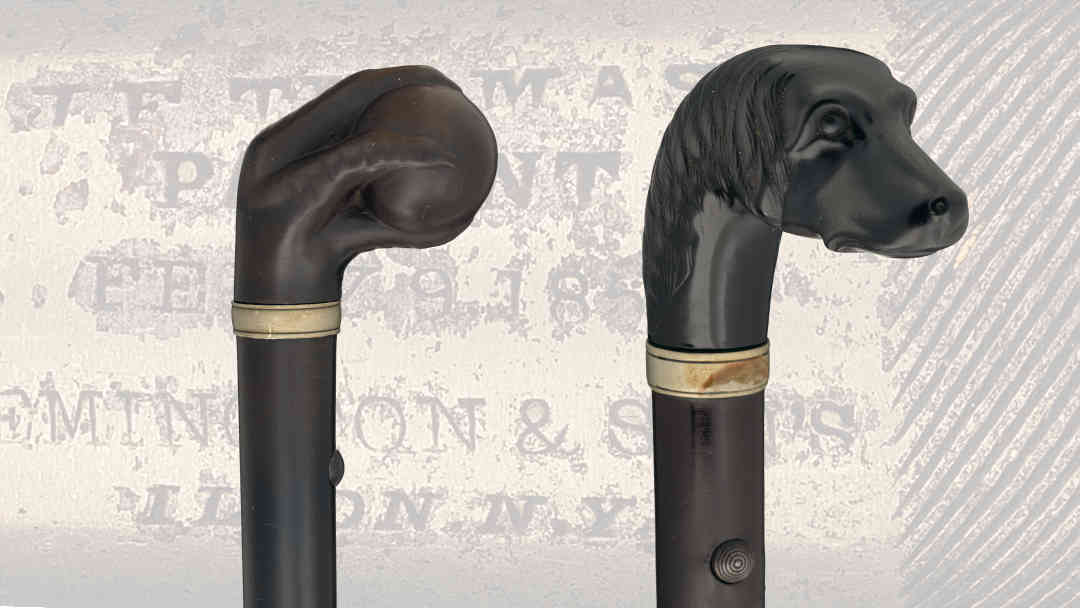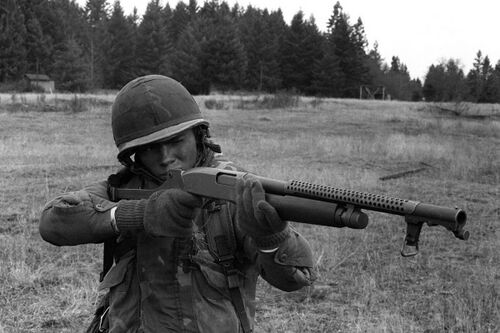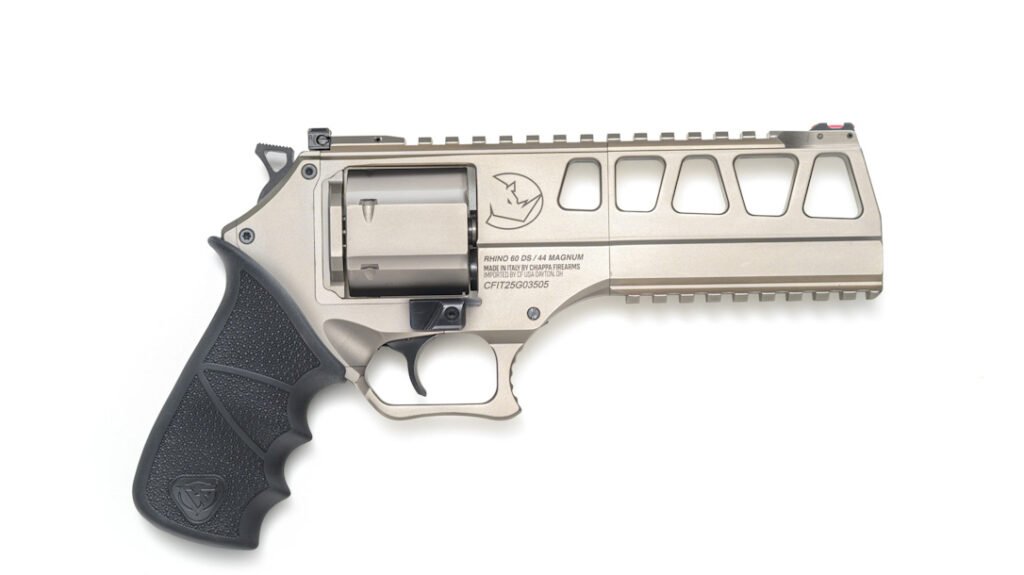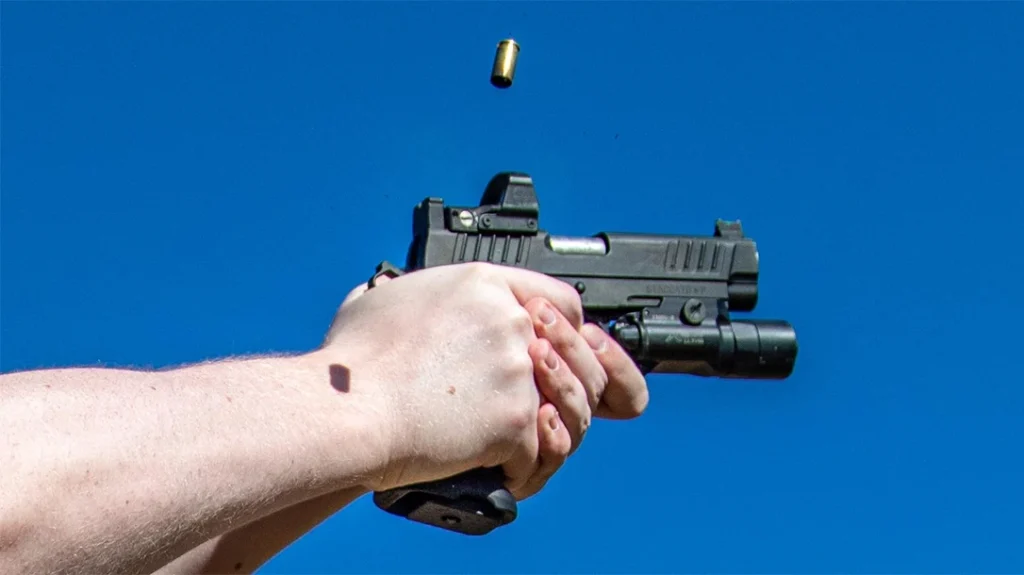I was first introduced to cane guns by James Bond, specifically in the movie The World is Not Enough. It’s worth mentioning that the very first James Bond movie was a television film made in 1954. This often-forgotten film also featured a cane gun. I always thought the idea was interesting and fascinating, but I had no idea there was a fairly rich history of cane guns, and at one point, they were somewhat popular options. Popular enough to be produced by some big names in the firearms industry.
What’s a Cane Gun?
A cane gun is not just a walking stick but a concealed firearm. It’s akin to a cane sword but far more practical. These guns were designed to offer the urban gentleman a stylish walking stick that could also serve as ballistic protection. Walking sticks and canes were not always tools for those with mobility issues. They were once fashionable accessories for the Victorian-era gentleman.
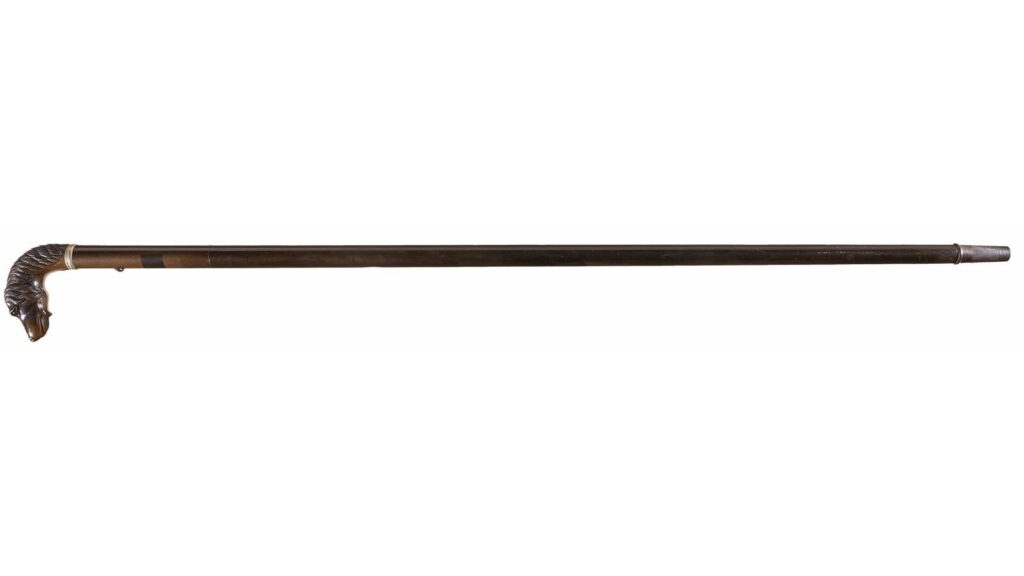
Advertisement — Continue Reading Below
A well-made cane is naturally an excellent melee weapon. In fact, there are historical martial arts focused on using a cane for self-defense. The problem with using the cane as a melee weapon is how close you have to get to the threat, and once you involve a knife or even a firearm, you want as much distance as you can get.
Thus, cane guns were born. These guns were concealable, and a well-dressed man didn’t need to ruin the lines of his suit with a revolver. It would be concealed in plane sight but also quick to action. Cane guns were seen as an option to deal with the 1800s city street crime and allow a gentleman to dispatch hoods, aggressive animals, and other threats.
The Rise of the Cane Gun
One of the largest producers of cane guns in the United States was Remington. Remington called these the Dandy Rifle. A dandy was a well-dressed man of the era who always looked impeccable. This was the type who’d carry a cane as a fashionable accessory. Remington’s naming convention was spot on.
Advertisement — Continue Reading Below
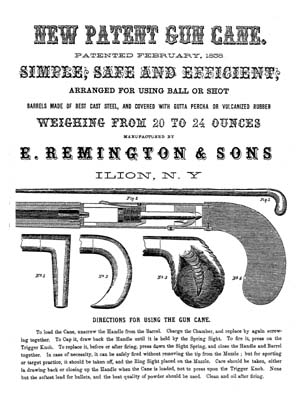
Remington employee John Thomas invented the percussion cane gun and received a patent for the weapon in 1859. The first Remington cane guns were percussion-operated, .31 caliber designs. They were black powder guns, and the firing mechanism was hidden until needed. The barrel was rifled, and the trigger was a simple hidden button that released a striker and fired the weapon. These were not muzzle-loaded, but loaded from the handle side.
These original Remington cane guns looked like gentleman’s canes and were discreet. They were stylish of the era and even lighter than most canes. The guns were produced for only a few years, and roughly 500 were manufactured. Once the Civil War kicked off, production went towards rifles and revolvers for the war effort.
Advertisement — Continue Reading Below

After the war, Remington reintroduced their Dandy cane guns, but this time, they used metallic cartridges. Remington produced .22 rimfire and .32 rimfire cane guns with a similar design to the percussion weapon. It was still striker-fired, and a button released the striker to fire the weapon. Some of these were converted to .32 centerfire, but not by Remington.
Beyond Remington
Over the years, several small companies produced a variety of cane guns. They were popular in Europe and the United States. These guns varied quite a bit in size, caliber, and design. They weren’t all rifles, and some very popular British options were .410s. It’s worth noting that most of these chambers are the original two-inch .410-rounds popular for the era’s garden guns.
Advertisement — Continue Reading Below
Some cane guns even featured removable stocks. A stocked weapon is more accurate, but it can’t see a big market for a long-range cane gun. Some of the more clever designs, like the Bean’s cane gun, used a bending design to turn the handle into a stock. The cane gun world wasn’t massive, but plenty of companies tried their hand at the market.
The Modern Cane Gun
The modern era of firearm production is devoid of cane guns due to the NFA. The National Firearms Act creates a registration scheme that classifies machine guns, suppressors, short-barreled rifles, and shotguns as Title 2 weapons. Within the NFA also sits an AOW or any other weapon category. The AOW category includes guns that don’t look like guns. Cane guns fall into this category.
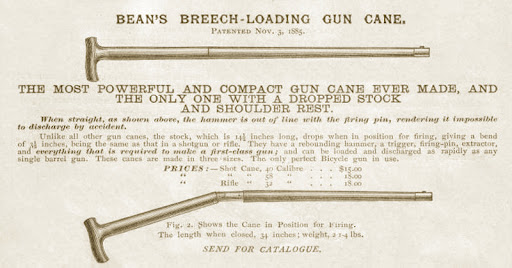
Advertisement — Continue Reading Below
A large majority of the older cane guns are exempt from the NFA due to their age, but not all of them are, so do your research accordingly. I’ve come across some modern cane guns made as expensive, limited production, or even one-off items. One of my favorites is a titanium cane gun that chambers 9mm and is integrally suppressed. I see photos passed around social media, but I struggle to find whoever created it.
These would be very niche items. Unline yesteryear canes aren’t common unless you have a disability that requires one. It’s also a single-shot firearm, so its utility is limited. I imagine accuracy is limited unless you find a way to mount sights. Imagine the drop testing you’d have to do just to make sure it can’t go off as you bump and hit the ground with it for every step!
I can’t say I don’t want one—specifically, a .410 variant with a 3-inch chamber. Buckshot would at least give me a little better chance of hitting something and give me five pellets for a single-shot weapon. I don’t need a cane, but I might one day, and I’d like one chock full of buckshot if that’s an option. Although, I guess I better move to an open-carry state!
Advertisement — Continue Reading Below
